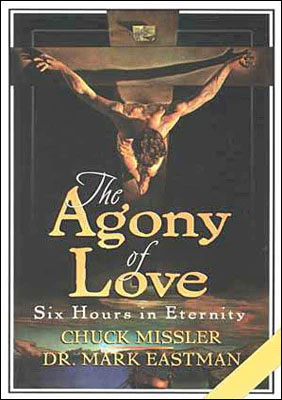The observances of Good Friday and Easter Sunday have perpetuated the traditional chronology that the crucifixion took place on a Friday, and that the Lord’s body was buried on that day at about 6:00 p.m., and that he rose from the dead early on the following Sunday morning.
There are some, however, that feel this tradition is at variance with the Scriptural record. The traditional view seems to conflict with certain prophetic and legal facts.
“Three Days”
One of the problems is reckoning “three days” between Friday evening and Sunday morning. I was once co-hosting a national TV show which had the famed apologist John Warwick Montgomery as a guest. This issue came up, and John rendered the traditional rationalization, pointing out that the Jews reckoned a partial day as a whole day.
I turned to my co-host and explained, “You must remember that John is an attorney, and that’s the way they bill!”
(John almost fell out of his chair laughing — he hadn’t realized that I was well aware of his distinguished legal background.)
But the difficulty remains. Our Lord’s definitive statement is one of the problems:
For as Jonah was three days and three nights in the whale’s belly; so shall the Son of man be three days and three nights in the heart of the earth.
Matthew 12:40
The mention of nights, as well as the number of days, makes it hard to render this as simply an idiomatic rhetorical device rather than a statement of fact.
Further, when Paul declares the resurrection of Christ to be “according to the Scriptures” in 1 Corinthians 15:4, if this isn’t an allusion to Jonah 1:17, then where else? (Perhaps, in Genesis 22, the three days between the “death” of Isaac — when the commandment came — and his “return” to Abraham may have been the macrocode, or typological allusion, that Paul might have had in mind.[1] )
Intensifying this controversy was the “three days” issue at the trial of Jesus.
Now the chief priests, and elders, and all the council, sought false witness against Jesus, to put him to death; But found none: yea, though many false witnesses came, [yet] found they none. At the last came two false witnesses, And said, This [fellow] said, I am able to destroy the temple of God, and to build it in three days.
Matthew 26:59–61
What did Jesus really say?
Destroy this temple [of His body], and in three days I will raise it up.
The same phrase reoccurs in the gospels a dozen times.[2] It also seems to frequently reoccur in prophetic patterns.[3]
The Sabbaths
Nowhere in the Gospels does it assert that Christ was crucified on a Friday. In Mark 15:42, it refers to “…the day before the sabbath.” This may be the root of the misunderstanding.
The Jews had other sabbaths in addition to the weekly shabbat (Saturday). In addition to the weekly sabbaths, there were seven “high sabbaths” each year, and the first day of the Feast of Unleavened Bread, the 15th of Nisan, was one of them.[4]
Further, Matthew 28:1 should read, “At the end of the sabbaths,”[5] (which is plural in the Greek), implying there was a plurality of sabbaths that week.
If Passover, the 14th of Nisan, fell earlier in the week, the 15th could have been any day prior to Saturday, the weekly sabbath. “When the sabbaths were past” would, of course, be Sunday (actually, Saturday after sundown), in accordance to the Feast of First Fruits. (Some hold to a Thursday crucifixion on a similar basis.)
The 17th of Nisan
Jesus had declared that He would be in the grave three days, and yet was to be resurrected “on the morrow after the sabbath,” on the day of the Feast of First Fruits.[6]
It is interesting that the authorities, anxious to get the body off the cross before sundown, unknowingly were fulfilling God’s predetermined plan, “according to the Scriptures.”[7]
Noah’s flood ended on the 17th day of the 7th month.[8] This month becomes the 1st month at the institution of the Passover.[9] Our new beginning in Christ was on the anniversary of the Earth’s “new beginning” under Noah!
Israel’s new beginning, the crossing of the Red Sea, is believed to have been on the 17th of Nisan. Also, in their flight after Passover, Israel retrieved the body of Joseph from his tomb. After Passover, Jesus was retrieved from another Joseph’s tomb on this date.
The Jericho Journey
Another problem with a Friday crucifixion is John 12:1: “Then Jesus six days before the Passover came to Bethany…” (from Jericho). If the Friday view can be accepted, then six days earlier was the weekly shabbat, and on this day such a journey was legally out of the question for a devout Jew.
Summary
As for the Friday or Wednesday issue, there are many good scholars on each side of this controversy. I personally have become rather cynical toward any tradition that is not supported by Scripture.
Good Friday is the “traditional” view. The Wednesday crucifixion is known as the “reconstructed view.” This article is intended to stimulate study and constructive conversation during this precious season. One attempt to reconcile the chronology of the entire week is shown here:

The important thing is that the tomb was empty. The authorities made sure that this was indisputable. Indeed, He is risen!
The most important chapter in the Bible is 1 Corinthians 15. We encourage you to study it very carefully. (Also, note our special briefing package, Agony of Love.)
Next month we’ll explore the issue of “The Seventh Day.” Anyone who thinks that it’s simple to resolve the “Sunday Sabbath” hasn’t studied it.







